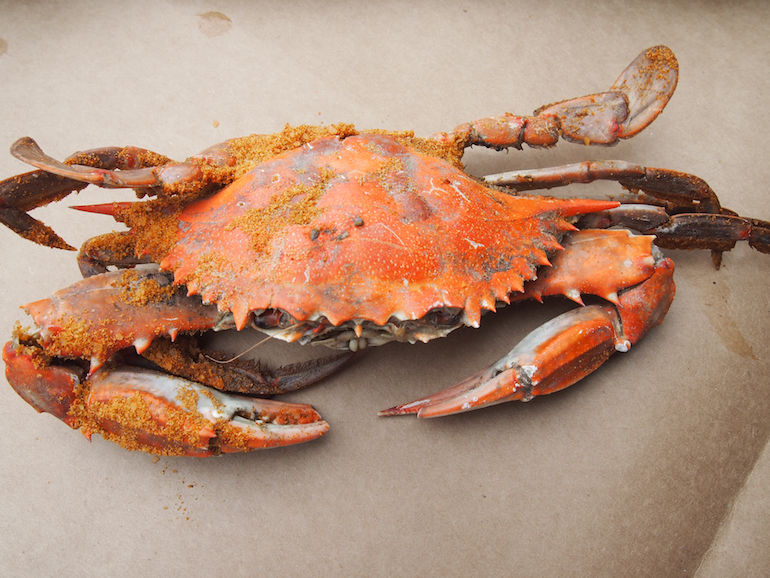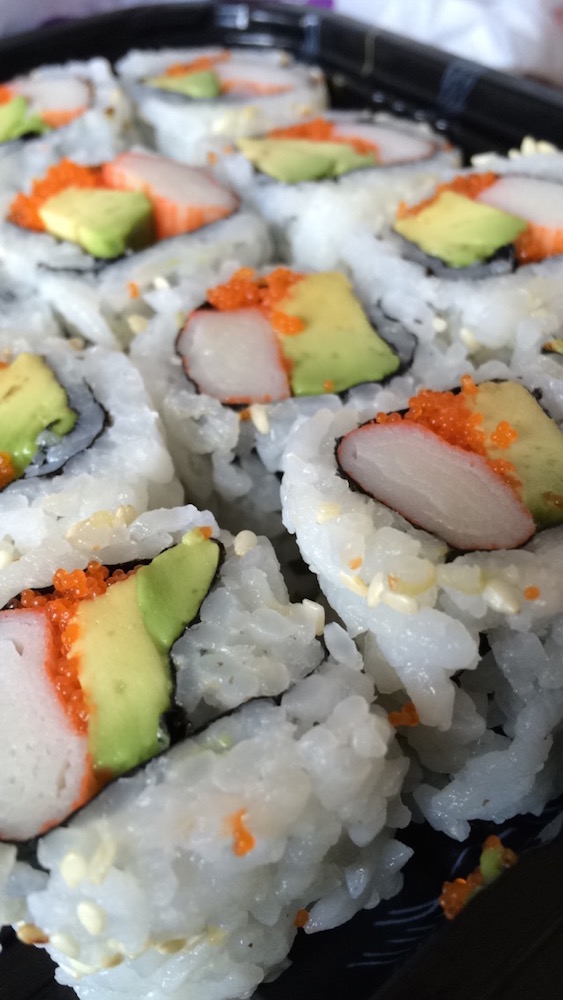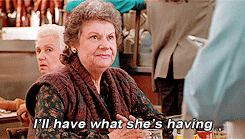It was a Friday night like any other. I was looking at the Japanese takeout menu, deciding what I wanted to order. And then, I noticed the description under one of my beloved favorites, the California Roll, included the words “imitation crab.” I was curious. I turned to Siri first asking “What is imitation crab?” When she inevitably failed to answer my question, I typed the same thing into Google. What I found would alter my sushi takeout order for the rest of my life.

Photo by Benjamin Martin
Imitation crab, commonly dubbed “Crabstick” at slyer Japanese institutions, is not real crab meat. The fish, called Surimi or literally “ground meat,” is actually a processed paste made from various fish, starch, fillings, flavors, coloring, and sometimes other meat made to look like crab legs. Other additives include egg white, salt, vegetable oil, humectants, sorbitol, sugar, soy protein, seasoning, enhancers like transglutaminase and MSG, and preservatives. No, I don’t know what all of those are either.

GIF courtesy of giphy.com
Many restaurants use this crab alternative because it costs less, and frankly, the truth of its ingredients often goes unrecognized. I myself have been ordering the California roll on a semi-weekly basis for years, taking for granted that the precisely rolled crab and avocado combination I was vacuuming into my mouth was the real deal. I never once contemplated that it was not, in fact, a crab’s leg, but a fish stick. I felt that I had been lied to by all sushi chefs in my life. I felt betrayed.

GIF courtesy of giphy.com
While there is no proven health concerns of consuming imitation crab, I was still distraught. First, I felt that my expectations of sushi had been misinformed. I was not always eating the fresh caught and healthful product I assumed.
As someone who attempts to eat organic and minimally-processed foods, I disapproved the crab stick manufacturing aspect when I found that there is often added MSG, which has received much controversy by itself. Also, for the many gluten-free people out there, add that to the list of things you can’t eat. Real crab also has higher nutritional value with more protein and less carbohydrates and sugar.

Photo by Perry Eisemann
Now, if you’re someone who doesn’t care about any of that stuff, go ahead and continue to order California Rolls to your heart’s desire. I’m sure you’ll be okay. But, if you’re like me and try to keep your diet natural as often as possible, look for those keywords such as imitation crab, krab, mock crab, and crab stick that tell you you’re about to order a nice serving of fake crab in your sushi.
If you’re not sure about the authenticity of crab, ask your server (or the person on the phone getting your takeout order) whether it’s real crab or not. And, if they inform you that it’s not, don’t freak out and leave (or hang up). Just order the salmon avocado roll, duh.

Gif courtesy of sodahead.com


